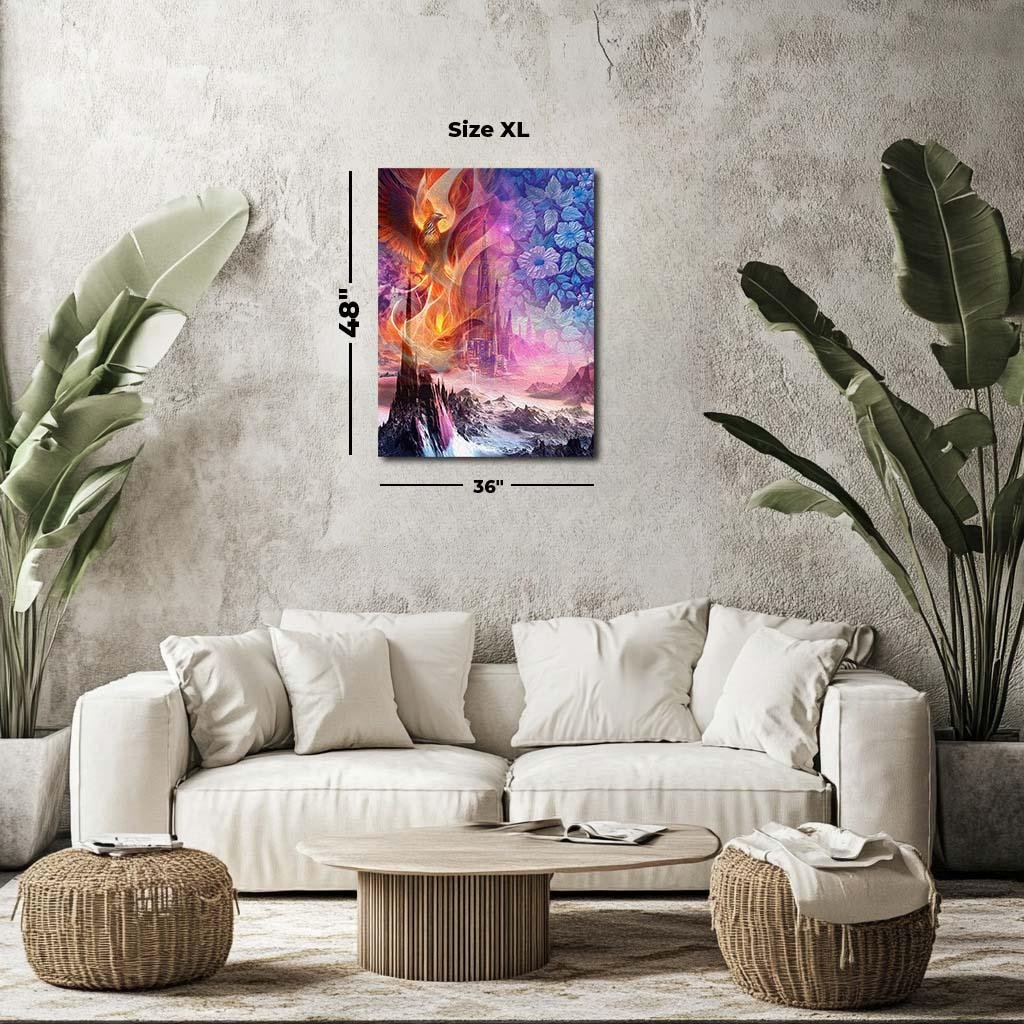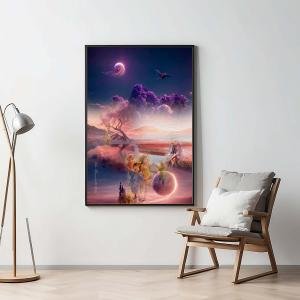The Phoenix of Dust and Spirit
"The Phoenix of Dust and Spirit" is a representation of life’s cyclical journey, rising from the ashes and returning once again to dust. This artwork, inspired by Ecclesiastes 3:20-22 , speaks of the ultimate fate shared by all living things—the inevitable return to the earth. The towering phoenix, engulfed in brilliant flames, symbolizes the spirit’s journey, both mysterious and magnificent. It rises from the ashes, embodying the human soul, its fleeting yet powerful existence.
Please see Below for Details…
Hotline Order:
Mon - Fri: 07AM - 06PM
404-872-4663
The verses from Ecclesiastes explore the profound nature of life and death, a duality that has fascinated mankind for millennia. The scripture reminds us, “All go unto one place; all are of the dust, and all turn to dust again.” This simple yet profound statement encapsulates the transient nature of all life. The phoenix, with its mythical ability to rise from its ashes, reflects this cycle—life, death, and rebirth. In the image, the phoenix’s upward flight represents the spirit of man, striving toward something greater, something eternal. Its wings, radiant and fierce, symbolize hope, even in the face of inevitable mortality.
The landscape below, a cold, mountainous terrain , represents the earth from which we come and to which we return. This rugged landscape emphasizes that, no matter how high we soar, “all turn to dust again.” The juxtaposition between the ethereal, fiery phoenix and the cold, earthly realm below reminds us of the duality of existence: spirit and body , heaven and earth . The verses speak of the mystery of the spirit: “Who knoweth the spirit of man that goeth upward, and the spirit of the beast that goeth downward to the earth?” This unanswered question is depicted by the phoenix’s uncertain journey into the unknown, with the ethereal city in the distance symbolizing the enigmatic destination of the soul.
The city in the background —with its towering spires—represents the human pursuit of meaning, achievements, and legacy. The verse concludes that “there is nothing better, than that a man should rejoice in his own works; for that is his portion.” The towering structures are not only symbols of achievement but also of transience. Despite their magnificence, they too will one day crumble into dust, just as the men who built them will. The intricate floral patterns that blend with the cityscape speak to the fragility of life, the beauty of creation, and the fact that all things—even those as delicate as flowers or as grand as cities—are fleeting.
This artwork is a meditation on the brevity of life and the mystery of the soul's destiny . The phoenix’s vibrant hues of red, orange, and gold evoke emotions of passion, renewal, and spirit, while the contrasting coldness of the earth below offers a stark reminder of life’s inevitable return to dust. The vibrant colors of the phoenix stand out against the cooler tones, symbolizing that while our bodies may return to the earth, the spirit’s journey is full of fire, energy, and mystery.
In this context, the verses from Ecclesiastes encourage reflection on the purpose of human existence. The phoenix reminds us that while our earthly endeavors, achievements, and works may seem grand, they are temporary. The verse asks us to take joy in what we accomplish, to “rejoice in our own works,” because that is all we truly have in life—our efforts and contributions. The city in the background represents these works, monumental and significant but ultimately temporary.
In a world that often chases immortality through wealth, power, or fame, these verses remind us that our portion is not found in how long we live or how much we achieve, but in finding joy in our work, our relationships, and our spirit. Whether we are wise or foolish, powerful or weak, all will share the same fate: a return to dust. And yet, the mystery of the spirit —the phoenix’s ascent—reminds us that there is something more, something unknown and worth striving toward.
This artwork serves as a visual allegory for the fleeting nature of life and the question of what lies beyond. It challenges the viewer to reflect on their own existence: What legacy will you leave behind? How will you rejoice in your work, knowing that all must one day return to the earth? And what of your spirit—what journey will it take, what heights will it soar to, when your time here is done?
Add your review
Your email address will not be published. Required fields are marked *
Please login to write review!
Looks like there are no reviews yet.








